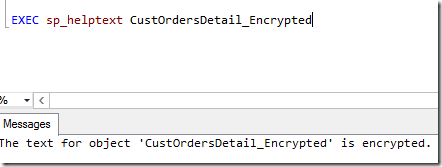baseboard | get Manufacturer, Model, Name, PartNumber, slotlayout, serialnumber, poweredon |
bios | get name, version, serialnumber |
bootconfig | get BootDirectory, Caption, TempDirectory, Lastdrive |
cdrom | get Name, Drive, Volumename |
computersystem | get Name, domain, Manufacturer, Model, NumberofProcessors, PrimaryOwnerName,Username, Roles, totalphysicalmemory /format:list |
cpu | get Name, Caption, MaxClockSpeed, DeviceID, status |
datafile | where name='c:\\boot.ini' get Archive, FileSize, FileType, InstallDate, Readable, Writeable, System, Version |
dcomapp | get Name, AppID /format:list |
desktop | get Name, ScreenSaverExecutable, ScreenSaverActive, Wallpaper /format:list |
desktopmonitor | get screenheight, screenwidth |
diskdrive | get Name, Manufacturer, Model, InterfaceType, MediaLoaded, MediaType |
diskquota | get User, Warninglimit, DiskSpaceUsed, QuotaVolume |
environment | get Description, VariableValue |
fsdir | where name='c:\\windows' get Archive, CreationDate, LastModified, Readable, Writeable, System, Hidden, Status |
group | get Caption, InstallDate, LocalAccount, Domain, SID, Status |
idecontroller | get Name, Manufacturer, DeviceID, Status |
irq | get Name, Status |
job | get Name, Owner, DaysOfMonth, DaysOfWeek, ElapsedTime, JobStatus, StartTime, Status |
loadorder | get Name, DriverEnabled, GroupOrder, Status |
logicaldisk | get Name, Compressed, Description, DriveType, FileSystem, FreeSpace, SupportsDiskQuotas, VolumeDirty, VolumeName |
memcache | get Name, BlockSize, Purpose, MaxCacheSize, Status |
memlogical | get AvailableVirtualMemory, TotalPageFileSpace, TotalPhysicalMemory, TotalVirtualMemory |
memphysical | get Manufacturer, Model, SerialNumber, MaxCapacity, MemoryDevices |
netclient | get Caption, Name, Manufacturer, Status |
netlogin | get Name, Fullname, ScriptPath, Profile, UserID, NumberOfLogons, PasswordAge, LogonServer, HomeDirectory, PrimaryGroupID |
netprotocol | get Caption, Description, GuaranteesSequencing, SupportsBroadcasting, SupportsEncryption, Status |
netuse | get Caption, DisplayType, LocalName, Name, ProviderName, Status |
nic | get AdapterType, AutoSense, Name, Installed, MACAddress, PNPDeviceID,PowerManagementSupported, Speed, StatusInfo |
nicconfig | get MACAddress, DefaultIPGateway, IPAddress, IPSubnet, DNSHostName, DNSDomain |
nicconfig | get MACAddress, IPAddress, DHCPEnabled, DHCPLeaseExpires, DHCPLeaseObtained, DHCPServer |
nicconfig | get MACAddress, IPAddress, DNSHostName, DNSDomain, DNSDomainSuffixSearchOrder, DNSEnabledForWINSResolution, DNSServerSearchOrder |
nicconfig | get MACAddress, IPAddress, WINSPrimaryServer, WINSSecondaryServer, WINSEnableLMHostsLookup, WINSHostLookupFile |
ntdomain | get Caption, ClientSiteName, DomainControllerAddress, DomainControllerName, Roles, Status |
ntevent | where (LogFile='system' and SourceName='W32Time') get Message, TimeGenerated |
ntevent | where (LogFile='system' and SourceName='W32Time' and Message like '%timesource%') get Message, TimeGenerated |
ntevent | where (LogFile='system' and SourceName='W32Time' and EventCode!='29') get TimeGenerated, EventCode, Message |
onboarddevice | get Description, DeviceType, Enabled, Status |
os | get Version, Caption, CountryCode, CSName, Description, InstallDate, SerialNumber, ServicePackMajorVersion, WindowsDirectory /format:list |
os | get CurrentTimeZone, FreePhysicalMemory, FreeVirtualMemory, LastBootUpTime, NumberofProcesses, NumberofUsers, Organization, RegisteredUser, Status |
pagefile | get Caption, CurrentUsage, Status, TempPageFile |
pagefileset | get Name, InitialSize, MaximumSize |
partition | get Caption, Size, PrimaryPartition, Status, Type |
printer | get DeviceID, DriverName, Hidden, Name, PortName, PowerManagementSupported, PrintJobDataType, VerticalResolution, Horizontalresolution |
printjob | get Description, Document, ElapsedTime, HostPrintQueue, JobID, JobStatus, Name, Notify, Owner, TimeSubmitted, TotalPages |
process | get Caption, CommandLine, Handle, HandleCount, PageFaults, PageFileUsage, PArentProcessId, ProcessId, ThreadCount |
product | get Description, InstallDate, Name, Vendor, Version |
qfe | get description, FixComments, HotFixID, InstalledBy, InstalledOn, ServicePackInEffect |
quotasetting | get Caption, DefaultLimit, Description, DefaultWarningLimit, SettingID, State |
recoveros | get AutoReboot, DebugFilePath, WriteDebugInfo, WriteToSystemLog |
Registry | get CurrentSize, MaximumSize, ProposedSize, Status |
scsicontroller | get Caption, DeviceID, Manufacturer, PNPDeviceID |
server | get ErrorsAccessPermissions, ErrorsGrantedAccess, ErrorsLogon, ErrorsSystem, FilesOpen, FileDirectorySearches |
service | get Name, Caption, State, ServiceType, StartMode, pathname |
share | get name, path, status |
sounddev | get Caption, DeviceID, PNPDeviceID, Manufacturer, status |
startup | get Caption, Location, Command |
sysaccount | get Caption, Domain, Name, SID, SIDType, Status |
sysdriver | get Caption, Name, PathName, ServiceType, State, Status |
systemenclosure | get Caption, Height, Depth, Manufacturer, Model, SMBIOSAssetTag, AudibleAlarm, SecurityStatus, SecurityBreach, PoweredOn, NumberOfPowerCords |
systemslot | get Number, SlotDesignation, Status, SupportsHotPlug, Version, CurrentUsage, ConnectorPinout |
tapedrive | get Name, Capabilities, Compression, Description, MediaType, NeedsCleaning, Status, StatusInfo |
timezone | get Caption, Bias, DaylightBias, DaylightName, StandardName |
useraccount | get AccountType, Description, Domain, Disabled, LocalAccount, Lockout, PasswordChangeable, PasswordExpires, PasswordRequired, SID |
memorychip | get BankLabel, Capacity, Caption, CreationClassName, DataWidth, Description, Devicelocator, FormFactor, HotSwappable, InstallDate, InterleaveDataDepth, InterleavePosition, Manufacturer, MemoryType, Model, Name, OtherIdentifyingInfo, PartNumber, PositionInRow, PoweredOn, Removable, Replaceable, SerialNumber, SKU, Speed, Status, Tag, TotalWidth, TypeDetail, Version |














